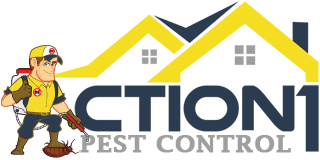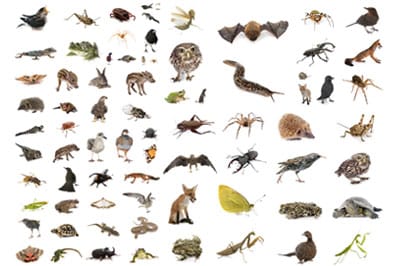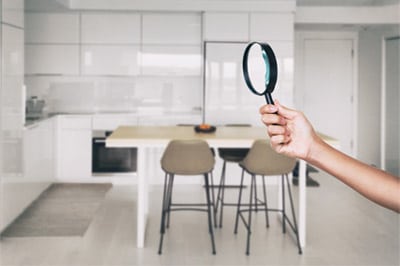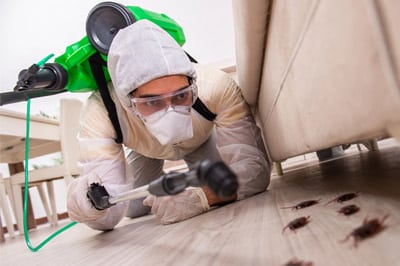Rodent Control and Extermination
Call Us Today- Home
- »
- Rodent Control
Rodents present one of the most persistent challenges homeowners face, with the potential to cause significant property damage and serious health risks. These adaptable pests can squeeze through surprisingly small openings, reproduce rapidly, and establish thriving colonies before most people even notice their presence.
The most effective approach to rodent control combines prevention, early detection, and targeted elimination methods rather than relying on a single solution. Understanding how rats, mice, and other rodents behave, where they enter our homes, and what attracts them gives us the foundation we need to address infestations successfully.
We’ll explore the science behind integrated pest management strategies, examine proven control methods that work in real-world situations, and provide practical steps to protect your family’s health and property from future rodent problems. If you dealing with a current rodent infestation, we can help you.
Highly Rated Rodent Control Company

High Quality Services

Affordable & Upfront Pricing

Emergency Same Day Service
Understanding Rodents and Infestations
Several rodent species commonly invade homes, each bringing distinct behaviors and risks. Recognizing early warning signs and understanding health hazards helps us address infestations before they become serious problems.
Common Species That Invade Homes
House mice are the most frequent indoor invaders. They measure 2.5 to 3.75 inches long with proportionally large ears and small feet. House mice prefer nesting in warm, secluded areas like wall voids and cabinets.
Norway rats are larger, stockier rodents measuring 7 to 9.5 inches long. They typically inhabit basements, crawl spaces, and ground-level areas. Norway rats have small eyes and ears relative to their body size.
Roof rats are sleeker than Norway rats, measuring 6 to 8 inches long. They excel at climbing and prefer upper areas of buildings like attics and rafters. Their tails are longer than their bodies.
Deer mice occasionally enter homes, particularly in rural areas. They have white bellies and feet with brown or gray backs. Deer mice prefer garages, sheds, and rarely used storage areas.
Squirrels sometimes invade attics and wall spaces. They are larger than other common rodents and are most active during daylight hours.
Signs of a Rodent Infestation
Droppings appear as the first and most reliable sign of rodent presence. Mouse droppings are small, pointed pellets about 1/8 inch long. Rat droppings are larger, measuring 1/2 to 3/4 inch long with blunt ends.
Fresh droppings appear dark and moist, while old droppings become dry and gray. We find droppings along walls, in cabinets, drawers, and near food sources.
Gnaw marks indicate active rodent populations. Rats and mice gnaw constantly to keep their teeth sharp and access food sources. Fresh gnaw marks appear light-colored, while older marks darken over time.
Scratching sounds in walls, ceilings, or floors often occur at night when rodents are most active. Running sounds typically indicate rats, while light scurrying suggests mice.
Grease marks appear along walls where rodents repeatedly travel the same paths. These dark smudges result from oil and dirt on their fur.
Nesting materials like shredded paper, fabric, or insulation indicate established populations ready for reproduction.
Health Risks Associated With Rodents
Rodents carry numerous diseases that transmit to humans through multiple pathways. Direct transmission occurs through contact with rodent droppings, urine, saliva, or bites.
Hantavirus poses serious respiratory risks, particularly from deer mice. We contract hantavirus by breathing contaminated dust particles or direct contact with infected rodents.
Salmonellosis spreads through contaminated food or surfaces. Rodents contaminate food preparation areas with bacteria from their droppings and urine.
Rat-bite fever results from bites or scratches from infected rodents. Symptoms include fever, muscle pain, and skin rashes.
Indirect transmission occurs through parasites like fleas, ticks, and mites that feed on infected rodents. Historically, rats carrying infected fleas caused bubonic plague outbreaks.
Leptospirosis spreads through contact with water or soil contaminated by infected rodent urine. This bacterial infection affects kidneys, liver, and other organs.
Lymphocytic choriomeningitis comes from house mice and causes flu-like symptoms that can progress to meningitis. Pregnant women face additional risks of birth defects.
Rodents also contaminate stored food, damage property through gnawing, and create fire hazards by chewing electrical wires.
Our 5 Step Pest and Rodent Control Process

Effective Rodent Control Methods
Modern rodent control relies on three primary approaches: physical trapping devices that capture or kill rodents instantly, chemical baits that eliminate populations over time, and repellent systems that deter infestations before they establish.
Trapping Solutions: Snap and Sticky Traps
Snap traps remain the most reliable mechanical solution for rodent control. These spring-loaded devices deliver instant kills when properly positioned along rodent pathways.
We recommend placing snap traps perpendicular to walls where rodents travel. The trigger plate should face the wall since rodents prefer running along edges rather than open spaces.
Key snap trap advantages:
- Immediate results with visible confirmation
- Reusable and cost-effective
- No toxic chemicals required
- Safe around children when properly positioned
Sticky traps use adhesive surfaces to capture rodents alive. These work best for monitoring rodent activity and catching smaller species that might avoid snap traps.
Position sticky traps in narrow spaces like behind appliances or along baseboards. Replace them every few days as dust reduces their effectiveness.
We find sticky traps most effective when combined with other methods rather than used alone.
Rodenticides and Bait Stations
Bait stations provide the most effective approach for large infestations. These tamper-resistant containers hold rodenticides while preventing access by children and pets.
Modern rodenticides use anticoagulant compounds that require multiple feedings before taking effect. This delayed action prevents bait shyness and allows rodents to return to share food sources with colony members.
Professional-grade baiting strategies include:
- First-generation anticoagulants: Require multiple feedings over several days
- Second-generation anticoagulants: More potent but carry higher secondary poisoning risks
- Non-anticoagulant baits: Alternative chemistry for resistant populations
We place bait stations every 15-30 feet along active rodent pathways. Check stations weekly and refill as needed until activity stops.
Important safety considerations:
- Always use locked bait stations in occupied buildings
- Keep detailed records of bait placement and consumption
- Dispose of dead rodents promptly to prevent secondary poisoning
Ultrasonic and Natural Repellents
Ultrasonic repellents emit high-frequency sound waves designed to disturb rodent communication and navigation. These devices work best as supplementary deterrents rather than standalone solutions.
We position ultrasonic units in areas with hard surfaces that reflect sound waves effectively. Carpets and furniture absorb ultrasonic frequencies and reduce their range.
Effectiveness limitations:
- Rodents may adapt to constant ultrasonic exposure
- Physical barriers block sound transmission
- Results vary significantly between rodent species
Natural repellent options include peppermint oil, ammonia-soaked cotton balls, and predator urine. These create temporary deterrent effects through scent-based avoidance.
We apply natural repellents around entry points and nesting areas. Reapplication every few days maintains effectiveness as scents fade quickly.
Combined repellent approaches work better than single methods. Ultrasonic devices paired with scent deterrents create multiple sensory barriers that rodents prefer to avoid.
Key Causes and Entry Points for Rodents
Rodents enter homes through surprisingly small openings while being attracted by food sources, shelter opportunities, and favorable environmental conditions. Understanding these attraction factors and common entry points allows property owners to implement targeted prevention strategies.
Factors Attracting Rodents to Homes
Food Sources represent the primary attraction for rodent infestations. Crumbs on countertops, unsealed pantry items, and pet food left in bowls create ideal feeding opportunities.
We observe that rodents particularly target:
- Grains, cereals, and dry goods in pantries
- Garbage containers without tight-fitting lids
- Bird seed and outdoor pet food
- Compost piles near foundation walls
Shelter and Nesting Sites draw rodents seeking protection from weather and predators. Cluttered basements, attics with insulation, and storage areas provide perfect nesting environments.
Water Sources complete the habitat requirements. Leaky pipes, condensation around HVAC systems, and standing water in basements attract thirsty rodents year-round.
Seasonal factors increase attraction during colder months when rodents seek warm indoor spaces. Properties near fields, wooded areas, or construction sites face higher risks as displaced rodents search for new territories.
Identifying and Sealing Entry Points
Common Entry Points require systematic inspection to prevent rodents effectively. Mice squeeze through openings as small as a dime, while rats need spaces roughly the size of a quarter.
Critical Areas to Inspect:
- Gaps around doors and windows
- Cracks in foundation walls
- Openings around utility lines and pipes
- Damaged weather stripping
- Vents without proper screening
- Roof line gaps and damaged soffits
Sealing Materials and Techniques vary based on entry point size and location. Steel wool works effectively for small gaps since rodents cannot chew through it easily.
For larger openings, we recommend expanding foam combined with metal mesh backing. Caulk seals minor cracks around windows and doors, while concrete patching compound addresses foundation gaps.
Professional Assessment becomes necessary when dealing with extensive entry points or recurring rodent infestations. Trained inspectors identify vulnerabilities that property owners often miss, particularly in crawl spaces and attic areas.
Regular quarterly inspections help maintain sealed entry points and identify new vulnerabilities before they become access routes for rodent infestations.
Integrated Pest Management Strategies
IPM combines prevention, exclusion, sanitation, and targeted interventions to create sustainable rodent control solutions. Professional expertise becomes essential when infestations exceed manageable levels or require specialized knowledge.
Prevention and Long-Term Maintenance
Sanitation forms the foundation of effective rodent control. We must eliminate food sources by storing items in sealed containers and cleaning up crumbs immediately.
Water sources require equal attention. Fixing leaky pipes and removing standing water prevents rodents from establishing territories in our spaces.
Exclusion techniques provide the most reliable long-term results:
- Seal holes larger than ¼ inch with steel wool and caulk
- Install door sweeps on exterior doors
- Cover vents with hardware cloth
- Trim vegetation away from building foundations
Regular monitoring helps us detect problems early. We should inspect for droppings, gnaw marks, and rub marks along walls monthly.
Habitat modification reduces attractive nesting sites. Remove clutter, store materials off the ground, and maintain clean storage areas.
Documentation tracks our progress and identifies problem areas. Recording inspection dates, findings, and control measures helps refine our approach over time.
Understanding When to Call Us
Large infestations typically require our professionals who have access to commercial-grade tools and techniques. Signs include multiple active areas, extensive damage, or persistent activity despite our efforts.
Health risks warrant immediate professional intervention. Pregnant women, young children, and immunocompromised individuals face greater dangers from rodent-borne diseases.
Our experts bring specialized knowledge of rodent behavior and biology. They can identify species, locate entry points we might miss, and develop comprehensive treatment plans.
Structural modifications often exceed DIY capabilities. Complex exclusion work involving rooflines, foundations, or HVAC systems requires professional expertise and proper equipment.
Chemical applications in sensitive environments like food service or healthcare facilities need certified professionals who understand proper protocols and safety requirements.
You should contact our professionals when rodent activity continues after implementing basic IPM strategies for 2-3 weeks.
Sanitation and Exclusion Practices
We must eliminate food sources and shelter opportunities that attract rodents to our homes. Proper sanitation forms the foundation of effective rodent control by removing the basic necessities these pests seek.
Food storage requires airtight containers made of glass or metal. We should store all dry goods, pet food, and birdseed in sealed containers that rodents cannot chew through. Plastic bags and cardboard boxes provide no protection against determined rodents.
Regular cleaning removes food debris that attracts rodents. We need to sweep floors daily, wipe down counters after food preparation, and clean under appliances monthly. Grease buildup behind stoves and food particles under refrigerators create ideal feeding opportunities.
Exclusion practices focus on sealing entry points throughout our homes. We should inspect foundations, walls, and rooflines for gaps larger than one-quarter inch. Steel wool and caulk effectively seal small openings, while hardware cloth blocks larger gaps around vents and utility lines.
Outdoor maintenance prevents rodent infestations from starting. We must trim vegetation away from building foundations and remove debris piles where rodents might nest.
Monitoring and Ongoing Vigilance
We need systematic monitoring to detect rodent activity before infestations develop. Early detection allows us to address problems when they remain manageable and less costly to resolve.
Seasonal inspections should occur quarterly, focusing on basements, attics, and storage areas. We look for droppings, gnaw marks, grease stains along walls, and unusual odors that indicate rodent presence. Fresh droppings appear dark and moist, while old droppings become gray and crumbly.
Monitoring tools help us track rodent activity without using poison. We can place non-toxic monitoring stations along walls where rodents typically travel. These stations contain attractants that reveal rodent presence through disturbed materials or tracking powder.
We should maintain detailed records of inspection findings and control measures. Documentation helps us identify patterns and adjust our prevention strategies based on seasonal rodent behavior.
Professional assessments provide expert evaluation when our monitoring reveals persistent problems. Licensed pest control professionals can identify vulnerabilities we might miss and recommend targeted solutions for our specific situations.

Why Hire Our Team
Our rodent control approach combines thorough property assessment with customized treatment plans designed for your specific infestation. We leverage deep understanding of mice and rat behaviors while strategically integrating traps and rodenticides for maximum effectiveness.
Comprehensive Inspection and Assessment
We begin every rodent control service with a detailed property inspection to identify active infestations and potential risk areas. Our technicians examine both interior and exterior spaces, looking for droppings, gnaw marks, grease trails, and entry points.
Key inspection areas include:
- Basements, attics, and crawl spaces
- Kitchen and pantry areas
- Garage and storage spaces
- Foundation cracks and utility entry points
We assess the severity of mice and rats populations using standardized metrics. This data helps us determine the most effective treatment timeline and resource allocation.
Our inspection process also identifies conditions that attract rodents to your property. We evaluate food sources, water access, nesting materials, and shelter opportunities that encourage infestations.
Customized Treatment Strategies
Each property receives a tailored rodent control plan based on infestation severity, building structure, and environmental factors. We consider the specific species present, whether mice or rats, as their behaviors require different approaches.
Our treatment strategies adapt to your property’s unique characteristics:
| Property Type | Treatment Focus | Duration |
|---|---|---|
| Residential | Interior trapping, exclusion | 2-4 weeks |
| Commercial | Integrated monitoring, sanitation | 4-8 weeks |
| Industrial | Large-scale baiting, maintenance | Ongoing |
We prioritize safe solutions for families and pets while maintaining treatment effectiveness. Our plans include follow-up visits to monitor progress and adjust strategies as needed.
Treatment intensity scales with infestation size. Light infestations may require only targeted trapping, while severe cases need comprehensive rodenticide programs combined with exclusion work.
Understanding rodent behavior patterns allows us to predict movement and feeding habits for strategic control placement. Mice typically travel along walls and explore new areas, while rats are more cautious and follow established routes.





